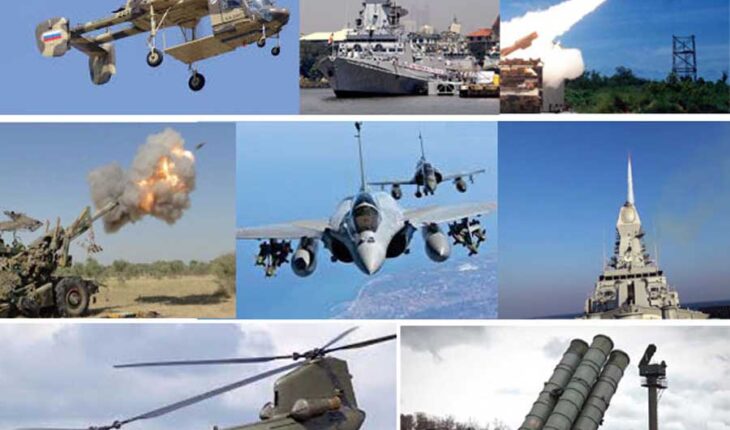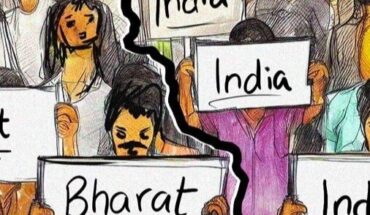*Precision Weapons Systems Trigger Worldwide Demand
There was little surprise, when India’s Defence Minister, Rajnath Singh, announced on April 1 that the country’s defence exports have registered a 31 per cent rise during the financial year closing on March 31, 2024.
Earlier, the Finance Minister, Nirmala Sitharaman , had estimated that Indian defence exports might touch USD 2.8 billion or Rs. 24,000 crores in the year 2024. The success in the previous year with Rs. 21,000 crores has made the current year more promising for defence exports despite the ongoing polls. It is believed that the target might be achieved without much difficulty.
The convergence of the state-of-the art technologies being developed in the IITs, especially in Madras and Roorkee, blended with the field experiences of the defence forces accompanied by the active participation of the private sector, including Tatas and L&T , has ushered in paradigm changes in the country’s traditional approach towards defence production and also reluctance in developing new weapon systems.
However, Defence Research and Development Organisation (DRDO) as well as the public sector defence production units, have complemented in achieving quality products as well as seeking worldwide markets. In this challenging sector, the defence ministry is supporting a large number of start-ups in this sector. The development of drones by a team of highly accomplished technologists, who recently had set up a start-up, received financial support through banks.
Pinaka’s Supplies to Armenia
The recent protests from Azerbaijan, Armenia’s neighbour, which had been using drones received from Turkey, against the Indian supplies to the tiny country has received worldwide attention. Also, the success of the Pinaka system with its “shoot and scoot” capability has drawn enquiries from various countries. Armenia has successfully deployed the Pinaka system for self-defence. Initially, it was developed for the Indian army. It can fire a salvo of 12 HE rockets in44 seconds with a range of 40 kilometers, but its enhanced version has a range of 120 kilometres. Armenia has opted for it due to Its low cost and simplicity of use, thus making it an ideal weapons system for self-defence.
Improving the Range of Field Guns
In conventional warfare, the artillery plays a key-role , but its fire power must be accompanied by focusing on the target. It means that the precision for ensuring the target has to be improved.
The IIT Madras and Munitions India Limited (MIL) have been working together to develop India’s first indigenous 155 mm guided smart ammunition. Their success can be judged by the fact that ammunition will have a Circular Error Probable (CEP) of 10 meters, compared to the current range of 500 meters. The shells will be guided by NavIC satellites and will have a range of at least 8 km and a maximum of 38 km.
The IIT Madras has also developed a ramjet-powered artillery shell with a range of 78 km. The ramjet shell can be fired from all 155 mm howitzers in the Indian Army’s inventory. It is believed that India’s two adversaries, Pakistan and China too would soon be developing the range of their field guns.
The Controversy
The publication of news regarding the Indian supplies to Armenia in the Azerbaijan news portal has caused controversy. It has published a news report with pictures of a cargo being claimed to be India’s indigenous Pinaka multi-barrel rocket launchers. The news portal Caliber.az put out videos of a camouflaged convoy moving through Iran’s Nurduz border checkpoint into Armenia.
It is being claimed that the convoy might be carrying military cargo delivered to the Iranian port of Bandar Abbas from the eastern coast of the Caspian Sea. Quoting “independent” sources, the portal identified the source of the cargo as India, which has increased its military-technical cooperation with Armenia in recent years.
Armenia and Azerbaijan have been engaged in a conflict over control of the Nagorno-Karabakh region that resulted in a 45-day war in September 2020. A peace deal brokered by Russia put an end to fighting till 2022 when frequent ceasefire violations escalated into another two-day conflict in September 2023, followed by scattered instances of border clashes.
Amidst the reports suggesting weapons from India had entered Armenia, Hikmet Hajiyev — foreign policy adviser to the president of Azerbaijan — called on the Indian Ambassador to the country, Sridharan Madhusudhanan. Hajiyev noted that Azerbaijan was concerned about expanding military cooperation between Armenia and India and the circulation of photos and videos reportedly showing the transportation of Indian-made weapons systems to Armenia through Iran.
Earlier, Armenia had sought Indian assistance to India to beef up its defences with the purchase of multiple military systems amid continuing tensions with Azerbaijan, which is seen as an ally of Pakistan and Turkey. Armenian Defence Minister Suren Papikyan even met his Indian counterpart Rajnath Singh on the sidelines of the DefExpo held last August, looking to expand defence cooperation with India.
It appears that India’s support to Armenia could also be attributed to the Azerbaijani-Turkish-Pakistani axis, which threatens Armenia as well as India’s interests in the region. The report said that Armenia is also interested in purchasing Indian-made drones and anti-drone systems, and more deals will be known in the coming months. It is true that India’s decision to supply Brahmos to the Philippines has already caused anger in Beijing, but India has already crossed the era of neutrality in world affairs.
India’s arms sales to Armenia go beyond business-as-usual relationships. It is being argued in India that this military relationship has a geopolitical background, as India aims to establish itself as a reliable defense player globally and secure its national interests regionally by containing Pakistan, Turkey and their junior partner Azerbaijan.
Gopal Misra has been associated with national and international media. His books on journalism and geo-politics have been well-appreciated. Views are personal.





